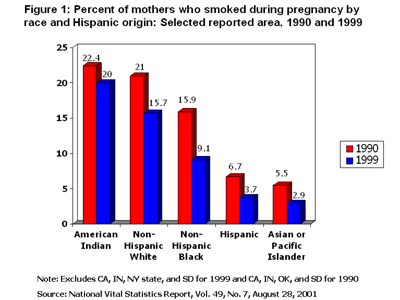-
MyChart
Log in to our secure, personalized website to manage your care (formerly myMDAnderson).
-
Request an Appointment
If you are ready to make an appointment, select a button on the right. If you have questions about MD Anderson’s appointment process, our information page may be the best place to start.
Appointment Information - Donate Today
Project TEAM

Special Populations and Smoking

Sometimes influences to quit smoking come from the most unusual sources. (For a possible scenario, click here.) Usually these voices are muted in comparison with the trumpet of tobacco trade, but nonetheless a small voice—that of a grandson of a smoking grandparent or the inner voice of a pregnant woman—can change what years of habit and good intentions cannot. In the paragraphs below we are going to discuss special populations in the context of smoking—the unborn and young who are at risk for exposure to tobacco's effects because a mother or other household member smokes, middle school and high school students who get hooked on smoking early, those who are genetically predisposed to tobacco use, and individuals who are depressed.
These special populations who are vulnerable to tobacco addiction or to the harm tobacco can cause demand special considerations from those interested in promoting cessation. Their unique situations require recognition, especially inasmuch as they may require special attention or tailored interventions that might not be necessary for others who are seeking to quit. Experience and familiarity with these cases may eventually equip physicians, pharmacists or others with skills specially suited to meeting the particular needs of these groups and make them "specialists" in their care.
Special Populations: Pregnant Women and Parents
Though smokers can be heard defending their habit by saying it doesn't affect anyone but them, that is clearly a claim pregnant women and parents cannot make. Smoking among pregnant women and the parents of young children affects not only the adults but also the children, whose developing and sensitive respiratory tracts make them especially vulnerable to tobacco's harm.
The potential adverse effects on fetal development are what make smoking among women of child-bearing age an important issue. The consequences of smoking during pregnancy include the following life-threatening risks:
- Miscarriage or spontaneous abortion
- Preterm delivery
- Low birth weight
Maternal smoking is associated annually with the birth of up to 61,000 babies born with low birth weight and up to 26,000 admissions to neonatal intensive care units. In 1999 about 12.3% of women who gave birth were smokers, marking a 10-year decline in maternal smoking. An exception to this general rule was found in the group of girls 15 to 19 years of age. In that group, the percentage that smoked declined the first half of the period (between 1990 and 1994), but it grew between 1995 and 1999. At the close of the 1990s, 17.5% of women 15–19 years of age who were pregnant smoked. That rate makes this age group the one with the highest rate of smoking. The group with the largest decline between 1990 and 1999 was made up of women 30–34 years of age. In this group, smoking rates were cut almost in half between 1990 and 1999.
Women who were of native American Indian descent or were non-Hispanic whites were those most likely to have smoked during pregnancy. Though smoking rates declined in these groups between 1990 and 1999 (about 10% in American Indians and 25% in non-Hispanic whites), they remained above the overall rate in 1999: 20.0% of American Indians smoked, and 15.7% of non-Hispanic whites smoked. Groups with the lowest pregnancy smoking rates were Hispanics (3.7%) and Asian or Pacific Islanders (2.9%) (Fig. 1).

|
Page 1 of 9 next >>
